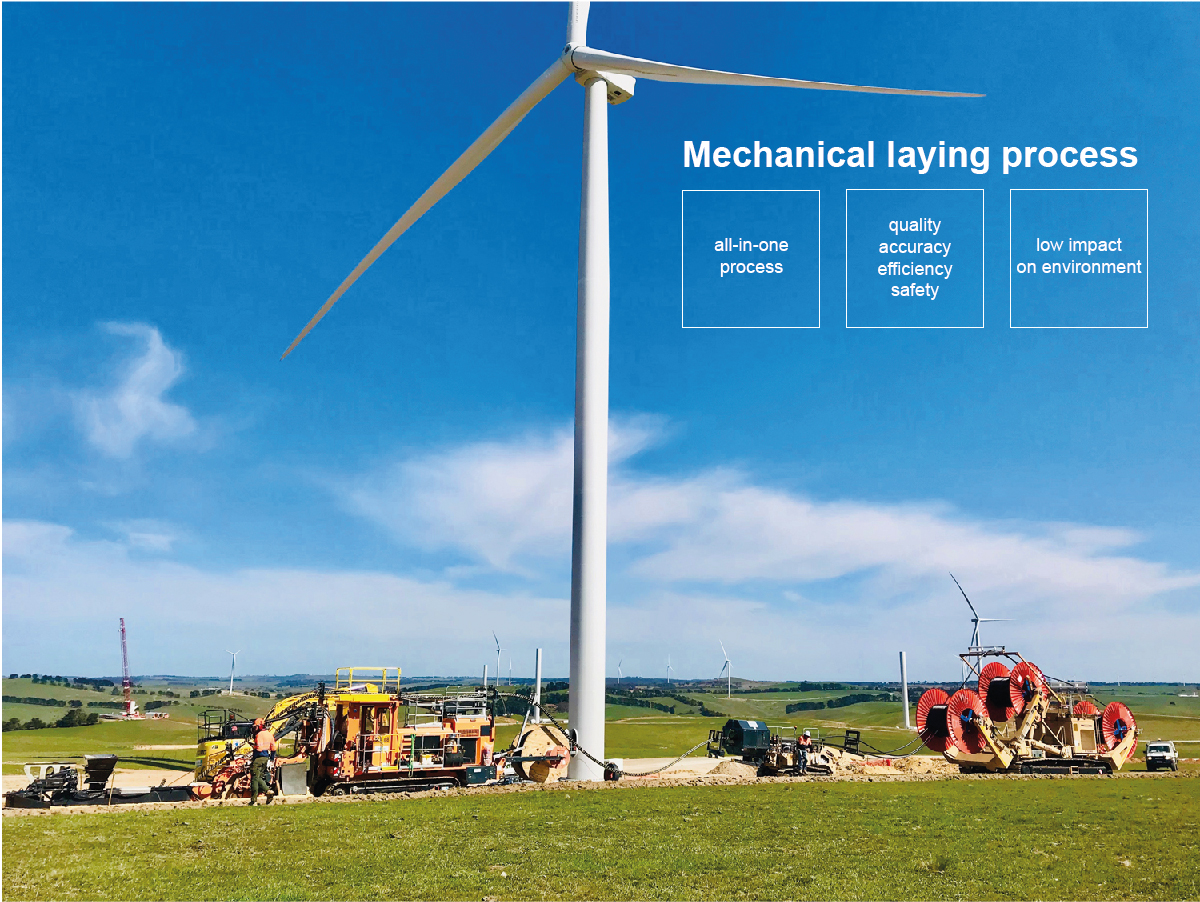Mechanical Laying Process

- Superior quality and accuracy
- Increased jobsite efficiency and safety
- Reduced jobsite overall cost and footprint
Mechanical laying is a continuous process to bury networks (mainly telecom and power) by cutting a narrow trench while laying simultaneously and automatically the cables or pipes designed to be buried.
In details, several tasks are carried out at the same time:
- opening of the trench,
- cleaning & flattening of the trench bottom,
- unwinding & precise installation of cables and/or ducts,
- screening of excavated materials,
- cables bedding with thermal sand,
- installation of PET/PVC cover
- warning tape
- backfilling
Advantages compared to conventional methods:
- Superior quality and accuracy: regular shaped trench with constant depth and width along the entire project, high precision in laying cables and ducts, high precision in positioning backfilled material all around cables and ducts
- Increased jobsite efficiency: high installation speed, deployment of up to 400m (1300 feet) per day in hard ground and up to 2500m (1.5 miles) per day in soft ground
- Safety first: no workers in deep trenches to place cables but only at a safety level; no trenches left opened at the end of the day, all restoration performed, fences closed, a day in day out technology
- Reduced jobsite overall cost and footprint: less equipment and staff for an equivalent yield resulting in reduction of potential risks for operators, the small size of the trench results in less material to remove and requires less imported material for backfilling, less environmental impact, drastic reduction in the disturbance of the work site and easier resources and material management.
An invention by Jacques MARAIS
In 1974, Jacques Marais invented in the Maine et Loire Region (West of France) the first equipment allowing mechanical laying of cables. At that time, the rocksaw was simply mounted at the back of a standard agricultural tractor. The improvement of this process then made the success of Marais.
Read more on: https://www.samarais.com/en/solutions/mechanical-laying.html
